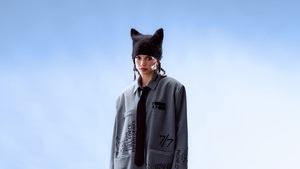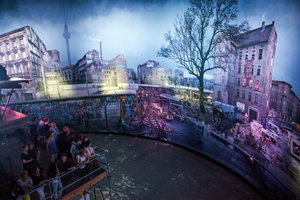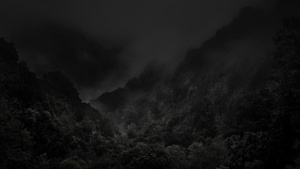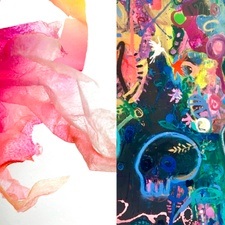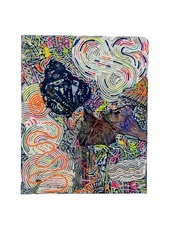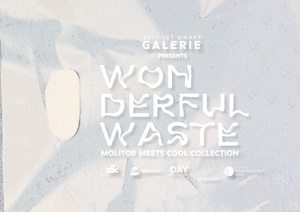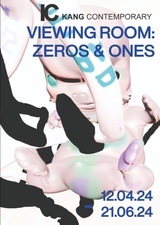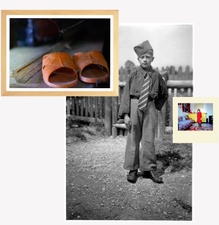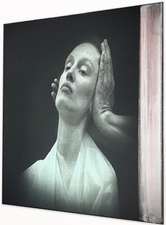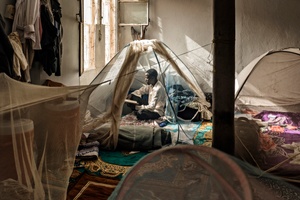Läuft. Die Ausstellung zur Menstruation
In the organizer's words:
About two billion people in the world menstruate. Over 1.5 billion more people have had or will have their periods. Despite this, menstruation is still considered a taboo subject. Through personal and museum objects, interviews, music, film, and art, the exhibition unfolds the discourses and debates of the past decades, traces the evolution of menstrual products from the late 19th century to today, and gives space to voices of menstruators.
For about ten years now, menstruation has entered the public discussion. Women are publishing period manifestos, advocating against period poverty and underuse, developing new menstrual products, or posting their experiences on social media under hashtags like #periodpositivity and #menstruationmatters. Because even though sex education classes are now in every school and period products for a wide variety of needs are available for purchase, there is still a long way to go to achieve "period dignity." Neither have all the physical processes surrounding menstruation been sufficiently researched, nor have speechlessness, period poverty and other hurdles been removed to enable menstruating women to deal with menstruation with dignity.
The Museum of European Cultures (MEK) presents "Läuft. The Exhibition on Menstruation," a history of pragmatism and utopias, inventiveness and activism. To that end, the exhibition brings together some 100 historical and brand-new menstrual articles and advertisements. Charts, interviews and hands-on stations convey the current state of knowledge. With nearly 200 everyday objects, photos, graphics, newspaper articles and social media posts, the exhibition fans out the discourses that have accompanied menstruators for decades: It deals with topics such as performance, period poverty, garbage, "normality," closeness to nature, or mood.
Exhibition with four thematic areas
The focus is on the experiences and voices of menstruators themselves. Numerous film and music excerpts as well as works of art round off the exhibition. The content focuses on four thematic areas: "History of Underwear and Menstrual Products," "Enlightenment and Current Knowledge," "Discourses on Menstruation," and "Pop Culture and Art.
History of underwear and menstrual products
The first topic area covers the development and marketing of specially designed menstrual products since the mid-19th century. For all menstrual products available today, precursors existed 100 years ago; at the same time, DIY (Do It Yourself) solutions remained widespread until the late 20th century. A "photo studio" allows visitors to try on models of historical "lingerie for special days" and thus experience on their own bodies what has changed over the decades.
Education and current knowledge
The second thematic area contains basic information on the menstrual cycle and menstruation. With the help of diagrams, exhibits and interviews with experts, the current state of knowledge is presented, open questions are addressed and refuted theories are discussed.
Discourses around menstruation
In the third thematic area, the exhibition explores the discursive field that has formed the framework for talking about menstruation since the late 19th century. Summarized are the ongoing renegotiation and reassessment of menstruation under four major "demands" that have been made on menstruators in various forms for decades: "Do (not) do that!", "This is how you're supposed to be!", "I bleed, therefore I am?", and "Something has to change!". Numerous exhibits, huge banners with advertisements and photos, and found objects from the press and social media impressively illustrate the individual topics.
Pop culture and art
The final thematic area discusses the contribution of music, comedy, art and film to the public negotiation of menstruation. The exhibition content is also communicated interactively through numerous hands-on stations. The participatory orientation is intended to provide visitors with multi-perspective and sensorimotor approaches to the topic. Special offers are available for school classes and teachers.
Exhibition program
Curator guided tours offer further exciting insights into the exhibition on the fourth Sunday of the month (summer break: July and August 2024) (3 pm). Guided tours for teens and adults will be available every 2 months, starting in November 2023, on the second Saturday of each month (3 pm).
From February 2024, the MEK invites you to three theme days: On February 25, 2024, it will be about menstrual products, on May 26, 2024, on the occasion of World Menstruation Day, it will be about things that need to change, and at the end of the exhibition on September 22, 2024, it will be about what remains or what will come in the future. Each of these days offers a comprehensive program of talks with invited guests, opportunities for exchange, workshops, and film screenings. Information on the education and outreach program will soon be available online.
This content has been machine translated.

